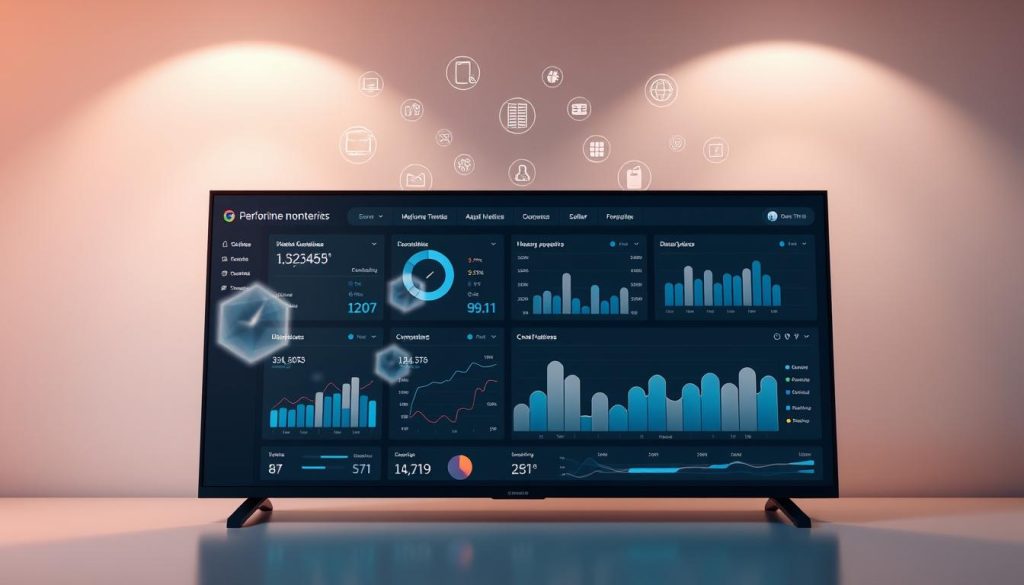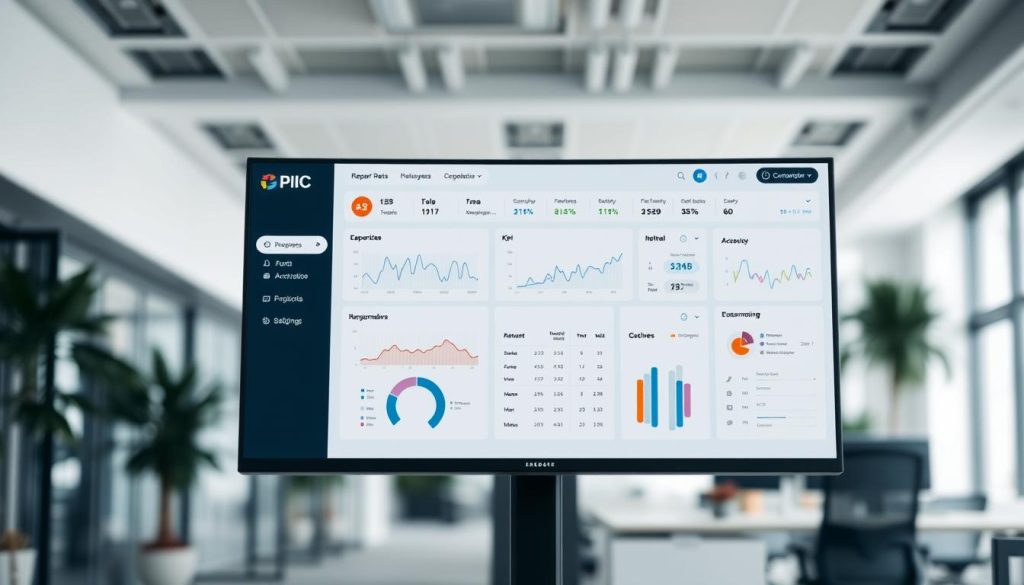Welcome! If you feel your team’s potential isn’t fully realized, you’re not alone. A recent survey found that while 74% of leaders see measuring worker contributions as critical, a mere 17% believe their organization does it well.
The old-fashioned annual review simply doesn’t cut it anymore. Today’s fast-paced work requires real-time insights, not a once-a-year summary.
This guide will show you how modern methods can transform your business. The right tools provide continuous visibility into progress, helping everyone stay aligned with bigger goals.
We’ll walk through practical strategies that companies use to monitor employee performance effectively. The focus is on fostering growth, not creating a culture of micromanagement.
You will learn to build systems that benefit both your people and the organization. The goal is to create an environment of accountability and transparency, where team members understand their impact and feel valued for their work over time.
Table of Contents
Key Takeaways
- Traditional annual reviews are often ineffective in modern work environments.
- Continuous feedback provides better insights than yearly evaluations.
- Modern tracking focuses on supporting employee growth and alignment with goals.
- Effective systems promote transparency and accountability without micromanaging.
- The right approach helps employees feel valued and understand their impact.
- This guide offers immediate, actionable strategies for leaders and HR professionals.
The Shift from Traditional Reviews to Continuous Performance Tracking
Many organizations are discovering that the annual review cycle no longer serves their dynamic workforce. Waiting twelve months to discuss contributions makes little sense when projects change weekly.
The Pitfalls of Annual Evaluations
Traditional performance reviews often look backward instead of forward. They miss day-to-day achievements that define real progress.
Deloitte research reveals that 64% of employees find annual reviews ineffective. Only 32% of executives consider them useful for talent decisions.
These processes carry heavy costs. Gallup estimates that a 10,000-person company can lose $2.4-$35 million yearly in labor time.
Benefits of a Continuous, Data-Driven Approach
Modern methods capture contributions as they happen. This creates a more accurate picture of employee performance.
Continuous feedback helps managers address issues immediately. Problems don’t fester for months without resolution.
This approach supports today’s work reality with cross-functional teams and rapid pivots. It aligns individual work with company objectives more effectively.
Shifting from annual reviews represents a fundamental rethink of how companies support growth. It’s about creating systems that benefit both employees and the organization.
Setting Clear and Achievable Performance Goals
Without well-defined targets, even the best teams can struggle to measure their success. Clear goals provide direction and purpose for everyone involved.
When staff help set their own objectives, they’re more likely to achieve them. This collaborative approach boosts motivation and commitment.
Implementing SMART and OKR Frameworks
The SMART framework ensures goals are Specific, Measurable, Achievable, Relevant, and Time-bound. This method creates realistic, trackable objectives.
OKRs (Objectives and Key Results) connect individual work to bigger company aims. They create alignment across departments and teams.
| Framework | Focus | Best For | Timeframe |
|---|---|---|---|
| SMART Goals | Individual tasks | Personal development | Short-term |
| OKRs | Strategic alignment | Team and company goals | Quarterly cycles |

« Goals should be realistic enough to achieve but ambitious enough to inspire growth. »
For example, a customer service representative might aim to reduce ticket escalations by 20%. This shows clear progress toward better service.
Effective performance tracking starts with these solid foundations. Goals should cascade from company objectives down to individual contributions.
Achieving 70-80% of challenging goals indicates strong progress. This approach avoids the pressure of perfect success rates.
Performance Tracking: A Game Changer for Modern Organizations
Modern businesses operate at speeds that traditional review cycles simply cannot match effectively. This systematic approach to monitoring key metrics transforms raw data into actionable insights for better decision-making.
How Real-Time Monitoring Transforms Workflow
Real-time visibility gives managers and team members immediate feedback on what’s working. They can spot bottlenecks as they emerge rather than discovering problems months later.
This enables quick course corrections that keep projects on track. Managers become coaches who offer timely support and remove obstacles before they derail progress.

Connecting Daily Tasks to Strategic Outcomes
When employees see how their daily work ladders up to bigger objectives, it creates powerful alignment. They understand the « why » behind their tasks, creating greater meaning in everyday activities.
This connection reduces wasted effort on low-priority work. Everyone focuses on what truly moves the business forward.
| Approach | Feedback Timing | Problem Resolution | Employee Engagement |
|---|---|---|---|
| Traditional Reviews | Annual/Quarterly | Delayed by months | Reactive |
| Real-Time Monitoring | Immediate | Within days/hours | Proactive |
« The best systems provide information people need to self-correct, celebrate wins, and ask for help when needed. »
Modern performance tracking enables business agility. Organizations respond quickly to changing priorities without losing momentum. This approach transforms how companies support growth and achievement.
Leveraging Data-Driven Feedback and Real-Time Analytics
The most effective organizations have moved beyond periodic evaluations to embrace a culture where feedback flows continuously throughout the year. This approach creates ongoing learning and improvement opportunities for everyone.
Gathering Actionable Insights through Continuous Feedback
Continuous feedback means collecting input from multiple sources—peers, managers, and stakeholders. This creates a comprehensive, 360-degree view of employee contributions.
The system expands perspective beyond traditional top-down reviews. It fosters real-time appreciation and professional growth for team members.

Using Analytics to Optimize Productivity
Real-time analytics transform raw information into meaningful insights. They highlight patterns and optimization opportunities that would otherwise remain hidden.
This approach helps remove bias from conversations about work quality. It replaces gut feelings with concrete evidence about what’s working well.
| Approach | Frequency | Sources | Impact |
|---|---|---|---|
| Traditional Feedback | Annual/Quarterly | Manager Only | Limited Perspective |
| Continuous Feedback | Ongoing | Multiple Sources | Holistic View |
Modern tools can monitor goal progress automatically. They send alerts when milestones are reached or when support is needed.
This creates opportunities for immediate recognition of achievements. It boosts morale more effectively than waiting months to acknowledge good work.
Integrating Performance Management Software for Seamless Processes
The right technology can transform how your organization approaches employee development. While manual methods work, specialized software creates consistency and deeper insights for everyone involved.
Choosing the Right Tools for Your Team
Selecting the best management software requires careful consideration. Look for platforms that integrate smoothly with your existing systems and match your company culture.
Platforms like Leapsome and Teamflect offer excellent solutions. Teamflect’s direct integration into Microsoft Teams reduces friction by meeting people where they already work.

Enhancing Engagement and Transparency with Software Solutions
Modern systems give employees clear visibility into their progress and impact. This transparency builds trust and motivation across the organization.
Essential features to look for include:
- Automated review cycles with customizable templates
- Goal and OKR tracking with visual progress indicators
- Built-in meeting agendas and 360-degree feedback
- Analytics dashboards for team insights
These tools reduce administrative work for managers and HR teams. Automation handles reminders, feedback collection, and reporting.
This lets leaders focus on coaching rather than paperwork. The investment creates better experiences from executives to individual contributors.
Make sure your chosen platform connects with project management and communication tools. This prevents data silos and creates a unified system.
Implementing Practical Steps to Monitor Employee Progress
Moving from theory to practice requires concrete actions that managers can implement immediately. The foundation of effective progress monitoring lies in regular, structured conversations between team leaders and their staff members.
Conducting Effective 1:1 Meetings and Reviews
Weekly or biweekly one-on-one meetings transform how you track employee development. Companies like Microsoft and Adobe replaced annual reviews with frequent check-ins.
This shift boosted satisfaction and strengthened manager-employee connections. Structured agendas should include goal updates and challenge resolution.
| Meeting Approach | Frequency | Focus Areas | Employee Ownership |
|---|---|---|---|
| Traditional Reviews | Semi-annual | Past achievements | Low |
| Modern 1:1s | Weekly/Biweekly | Current progress & future planning | High |
Tracking Goal Progress in Real Time
Between meetings, simple status indicators keep momentum going. Employees can mark goals as « on track » or « needs support » for instant visibility.
This approach helps managers track employee performance without micromanaging. The focus shifts to coaching and removing obstacles.
Remember that 70-80% goal achievement indicates strong progress. This expectation encourages innovation rather than conservative target-setting.
Regular conversations about job performance create continuous improvement. They turn progress monitoring into a collaborative process that benefits everyone involved.
Balancing Quantitative and Qualitative Metrics in Performance Reviews
True understanding of employee impact requires looking at both measurable results and behavioral qualities. The most effective evaluation systems blend hard numbers with human insights.
Quantitative metrics give you objective data like sales figures and project completion rates. These numbers provide clear benchmarks for comparison over time.
Measuring Productivity Alongside Employee Growth
Qualitative metrics capture softer skills like communication and teamwork. Peer feedback and manager assessments reveal how employees contribute to company culture.
Leading indicators predict future success through activities like training hours completed. Lagging indicators confirm past results such as quarterly revenue.
Customer satisfaction scores demonstrate how metrics can bridge both categories. Numerical ratings provide quantitative data while comments offer qualitative insights.
Tracking trends across these metric types reveals important patterns. You might notice that increased training correlates with better customer satisfaction months later.
This balanced approach prevents focusing solely on output numbers. It ensures you’re measuring both productivity and professional development for long-term success.
Embracing a Culture of Continuous Improvement and Feedback
The most successful companies understand that ongoing development is the cornerstone of sustainable business growth. This approach transforms how teams work together and achieve their objectives.
Fostering Accountability and Employee Development
Effective systems help staff understand expectations clearly. They celebrate achievements and address challenges early. This creates a supportive environment for professional growth.
Companies that recognize their people see 31% lower turnover according to SHRM. Employees feel valued and connected when their development matters. This builds strong engagement across the organization.
Empowering Teams with Regular Check-Ins
Frequent conversations create psychological safety. Team members feel comfortable sharing challenges and asking for help. This builds trust between managers and their reports.
MetLife increased customer satisfaction by 13% through better coaching. Investing in employee development directly impacts business outcomes. Regular feedback loops make these improvements possible.
This cultural shift turns management into an ongoing dialogue. Everyone works toward growth that aligns with company success. The focus stays on progress and meaningful contributions.
Conclusion
Transforming how we measure success requires more than just new tools—it demands a fundamental shift in workplace culture. The evolution from annual reviews to continuous, data-driven approaches represents this necessary change.
Effective systems begin with clear goals using frameworks like SMART and OKRs. This ensures everyone understands their contributions to business objectives. Real-time monitoring and feedback transform management from bureaucratic to strategic.
Balancing quantitative metrics with qualitative insights creates comprehensive views of progress. Regular check-ins and transparent tracking empower teams to own their growth.
While shifting to modern approaches requires investment, the benefits make it worthwhile. Better retention and engagement directly impact organizational outcomes.
Start small by implementing one strategy from this guide. Whether scheduling regular meetings or adopting goal software, each step moves you forward.
When done right, these systems create environments where people see their impact and reach their potential. This approach drives meaningful success for both individuals and the organization.
FAQ
How can modern tools help improve our team’s workflow?
Modern tools offer real-time insights into your team’s progress, helping streamline tasks and boost productivity. They provide data that supports better decision-making and keeps everyone aligned.
What are the benefits of moving away from annual reviews?
Shifting to a continuous approach allows for timely feedback and adjustments. It supports employee growth and keeps goals relevant throughout the year.
How do we set clear and achievable goals for our staff?
Using frameworks like SMART goals or OKRs helps create specific, measurable targets. This clarity guides your team and aligns their efforts with company objectives.
Why is real-time monitoring important for organizations?
Real-time monitoring helps quickly identify and address challenges. It connects daily activities to broader strategic outcomes, improving overall efficiency.
How can data-driven feedback improve our processes?
Data-driven feedback offers actionable insights that help refine workflows. It supports informed decisions and enhances team productivity.
What should we consider when choosing management software?
Look for software that fits your team’s needs and promotes transparency. The right tools can enhance engagement and simplify progress monitoring.
What are effective ways to monitor employee progress?
Regular one-on-one meetings and real-time goal tracking are key. These practices help maintain focus and support ongoing development.
How do we balance different types of metrics in reviews?
Combine quantitative data, like productivity metrics, with qualitative feedback on growth. This holistic view supports well-rounded assessments.
How can we foster a culture of continuous improvement?
Encourage regular check-ins and accountability. Empowering your team with consistent feedback drives development and engagement.




